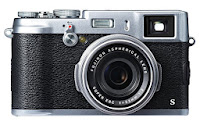Shooting a time lapse is getting more and more popular. It
is a lot easier for the general public to produce time shifting videos and much
cheaper than it was ten years ago. Time lapses combine all the challenges of
still and moving photography in one and the results can be spectacular.
So what are you waiting for?
What
do you need for a time lapse shoot?
As a basic set up you should have a DSLR camera and lens, a sturdy
tripod, a remote shutter release (preferably with an interval timer), a watch
and a note pad.
The first decision is, of course, what to shoot. A cloudy
sky is great, as you can really get a sense of enhanced speed and movement and
see what this method is capable of with an easily accessible subject (we all
have a sky nearby).
Set up your camera so you have primarily sky in the frame
but make sure to include a static area as well like a mountain or some
buildings as it can look a bit odd to see just moving clouds with nothing to
let your eyes "rest" on within the finished video.
Take a few test shots just to get the exposure correct.
Remember to turn off the autofocus on your lens and also set your camera
to manual mode so you don't get any variations in exposure as the clouds move
across the frame. Moving clouds can cause the exposure to change when set
to auto. This is very distracting in the final video, showing up as
bright or dark frames.
Next step is to work out how long you want the video to run for.
This is the maths part. Keep in mind that to ensure your video looks
smooth you will need to have at the very least 16 images per second when
you make your final movie. This is because the human eye cannot pick up that
many pictures one after the other at 16 frames per second so it looks like a
movie instead of several photos. Aim for 25 frames per second (fps) to get the
smoothest result. This means that to get one second of video you need to shoot
25 photos. So if you want a 20 second clip you need to shoot 25 frames per
second. This is a total of 500 images as 20 seconds X 25 frames per second
(fps) = 500 images. You can work out how many frames you need by simply
substituting the first number (how many seconds you want your movie to run
for). If maths isn't your strength then there are a few good free Apps
that automatically calculate this while also allowing you change all the other
parameters.
Now you need to work out your interval and shutter speed. Your
interval is dependent s on the speed at which your scene is changing and
also how much you want to speed up the scene. If a storm is rolling in and the
clouds are moving quickly you will need to shoot at every second or quicker so
that the end result doesn't look too "jumpy" i.e. there shouldn't be
an obvious jump from one frame to the next. If the clouds are moving
slowly then reduce your interval to about 2 seconds or longer.
When choosing your shutter speed, the golden rule is that your
shutter speed should be the same length as your interval time.
So if your interval is one photo per second, your shutter
should be open for 1 second every time as well (this is often referred to as a
180 degree shutter). Longer shutter speeds are also better
because there is less chance of a darker or lighter frame due to slight
variations in the shutter speed from one frame to the next with a quicker
shutter speed.
Make sure your memory card is empty, as nothing is more
frustrating than getting halfway through your shoot and having to change cards as
it equates to a dropped frame rate in the final video due to the frames missed
while you changed cards.
Should
you shoot RAW or JPEG?
It depends on the amount of post processing you might need to do.
I reduce the size of RAW files on my 5D to about 3 megapixels. Remember that HD
video is about 2 megapixels. They take up less space on the memory card so
there is less chance of running out of space halfway through the shoot.
Now is when you need an interval timer. I use the HahnelGiga T Pro wireless timer remote. I pick the interval required and set it on continuous
release so that it will keep shooting at the chosen interval until I manually
stop it.
Your final checklist before you head out should include additional
charged batteries, empty memory cards and the equipment listed at the start of
this article. Also take along anything you would normally use when
shooting landscapes because essentially that’s what you’re doing with the only
difference being that this capture moves.
Below is a video made according to the instructions provided here.
It was shot for 25 minutes as the sun set using a Giga T Pro interval
timer. The video is playing back at 25 frames per second, so for every
second of video there are 25 still photos used. The photographs were
taken every 4 seconds with an exposure time of 2 seconds per frame.

























